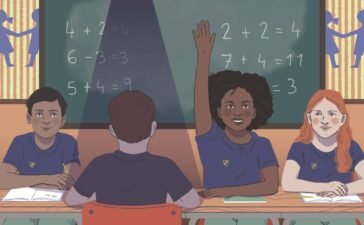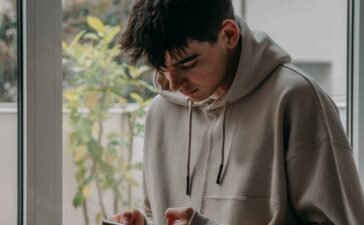Spotlight reading works best when done every week and for the entire school year. “The kids get into routines and thinking, seeing and responding,” Smith said. According to him, after the first few spotlight readings, students know exactly what to do when they enter the classroom and see a quote on the board. Spotlight reading also helps to set the tone for the rest of the class period. Especially for Smith’s fourth period class for seniors, which falls after lunch. “Spotlight focuses those kids quick,” he said. And it “starts the day with all three things that I teach: thinking, writing and reading.”
Sometimes Smith uses spotlight reading to catapult the class into a bigger discussion or lesson for the rest of the class period. Other days, spotlight reading fulfills the practice of what Smith calls “risky writing,” which de-emphasizes grammar and polished ideas. During spotlight reading, “I just want them to get used to responding to a text or a poem,” he said.
This lesson segment is designed to take 10 to 13 minutes at the beginning of a class period, and for students, gradually builds their ability to respond quickly to texts. At the end of each grading period, if students have completed each spotlight reading, they earn 100% credit.
Greater impact
Smith’s Round Rock colleague Meredith Lawrence collaborated with him to introduce spotlight reading schoolwide. According to Lawrence, “these short bursts of shining a light on [challenging texts] could be more powerful sometimes than spending an entire class period” on that text. By writing without scrutiny during spotlight reading, they learn to trust their literary instincts. “I call them reckless writings because…I want [students] to be reckless and excited for doing just like the activity itself, and not worrying about rules,” Lawrence said. “The reckless writing breaks them out of their own heads a little bit,” she continued.
After students write, Lawrence asks them to highlight all of the places that they feel they’ve developed an interesting idea or thoughts that they want to explore more. This practice of highlighting key moments “starts to build up [the students’] confidence and you start to see, as the year goes on, there’s more and more highlighted and there are fewer moments” of uncertainty, said Lawrence.
For Lawrence, spotlight reading also allows students to explore a text that she otherwise would not get to teach. Her hope is that students are exposed to authors and texts that “they end up choosing for independent reading some other time.” Throughout the years of spotlight reading, Lawrence has seen students’ confidence in their academic discussions. “It helps them be more engaged and comfortable with their own thought process,” she said.
For AP literature and composition, Smith’s students have to be able to write an essay in 40 minutes. That’s hard, he said. “So I need them to be able to read and recognize and find places to enter in quickly … I credit spotlight reading for all the gains we’ve had in our [AP] scores over the years.”
You Might Also Like
Should AI Chatbots Help Students With Their Mental Health?
Alongside has big plans to break negative cycles before they turn clinical, said Dr. Elsa Friis, a licensed psychologist for...
Strict Rules Can Foster Calm Classrooms. But Some Students Pay the Price
To his mom, when her son gets suspended from school and sent home, it feels like the school is ignoring...
Some Social Emotional Lessons Improve How Kids do at School, Yale Study Finds
Cipriano also directs the Education Collaboratory at Yale, whose mission is to “advance the science of learning and social and...
What Every Parent Should Know About Online Gambling
Since the U.S. Supreme Court removed the legal barriers that had prohibited states from allowing gambling, some 31 now permit...










